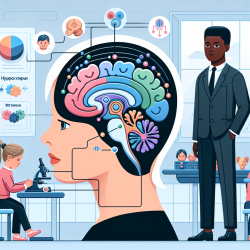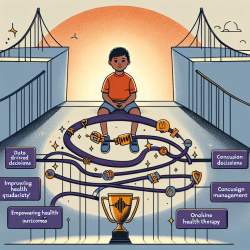As a speech-language pathologist dedicated to creating optimal outcomes for children, understanding the latest research and its practical applications is essential. The study "Grammatical Class Effects Across Impaired Child and Adult Populations" by Kambanaros and Grohmann (2015) provides valuable insights into how grammatical class impacts language retrieval in various impaired populations. This blog will summarize key findings and offer actionable strategies for practitioners to enhance their therapeutic interventions.
Understanding the Research
The study examined noun and verb retrieval in 89 language-impaired participants, including adults with acquired aphasia, schizophrenia-spectrum disorder, relapsing-remitting multiple sclerosis, and children with specific language impairment (SLI). The researchers used the Greek Object and Action Test (GOAT) to measure naming accuracy and analyzed error patterns to determine the underlying deficits.
Key Findings
- Noun vs. Verb Retrieval: Across all groups, verbs were significantly more challenging to retrieve than nouns.
- Error Patterns: Semantic errors were the most common, with circumlocutions (descriptive phrases) being more frequent for verbs.
- Lexical-Semantic Variables: Factors such as word frequency, age of acquisition, and imageability influenced naming accuracy differently across groups.
Implications for Practice
Understanding these findings can help practitioners tailor their therapeutic approaches to address specific challenges in language retrieval. Here are some actionable strategies:
1. Focus on Verb Retrieval
Given the consistent difficulty with verb retrieval across populations, interventions should prioritize verbs. Use high-frequency, early-acquired verbs with high imageability to facilitate easier retrieval.
2. Address Semantic Errors
Since semantic errors are prevalent, incorporate activities that strengthen semantic networks. Use semantic feature analysis and verb network strengthening treatment (VNeST) to improve verb retrieval.
3. Tailor Interventions to Individual Needs
Consider the specific lexical-semantic variables that impact each individual. For instance, if a child with SLI struggles more with verbs due to age of acquisition, focus on verbs learned earlier in development.
4. Utilize Multimodal Approaches
Incorporate visual aids, gestures, and context-based activities to support word retrieval. These methods can help bridge the gap between semantic knowledge and phonological output.
Encouraging Further Research
While this study provides a solid foundation, further research is necessary to explore the nuanced differences across various populations and languages. Practitioners are encouraged to stay updated with the latest research and contribute to the growing body of knowledge through clinical observations and case studies.
To read the original research paper, please follow this link: Grammatical Class Effects Across Impaired Child and Adult Populations.










